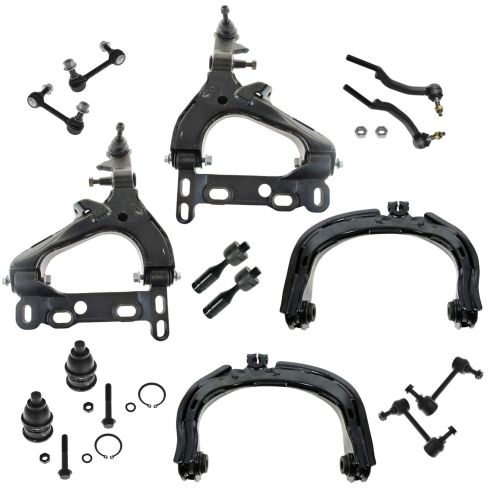1ASFK04853-Front & Rear 14 Piece Steering & Suspension Kit TRQ PSA59845

Replaces
2004 GMC Envoy XL Front & Rear 14 Piece Steering & Suspension Kit TRQ PSA59845

Product Reviews
Loading reviews
3.75/ 5.0
4
4 reviews
Suspension kit
October 13, 2017
All of the parts received seemed to be of high quality. My only issue was with some of the hardware. The threads on the sway bar end links were too big to fit the holes in the control arms, but jay was an easy fix. Overall, a great buy.
Awesome experience!!!
March 17, 2020
# 1 customer service, one package was damaged in transit and a few parts was missing. Called customer service and the parts was replaced and shipped next day without any hassles. Ease of installation, parts was exact fit OEM quality. Pricing was affordable and variety of kits makes repairs simple. Super satisfied with 1A Auto experience will definitely order again. Advised everyone I knew about 1A Auto.
Be ready to modify the parts
April 25, 2020
Parts are decent quality for the price, BUT the sway bar links do not fit in the lower control arm mounting bracket. Be prepared to have to enlarge this mounting hole. Inconvenient and time consuming. I expect all parts to match up without modification when buying parts in a kit. AND My biggest complaint was the inner tie rod that had threads that were not tapped all the way, I could not put it on more than 3/4, this part was unusable. I ended up reinstalling the old inner tie rod.
June 24, 2022
No problems, direct oem replacement
Customer Q&A
No questions have been asked about this item.
GMC is a registered trademark of General Motors Company. 1A Auto is not affiliated with or sponsored by GMC or General Motors Company.
See all trademarks.












